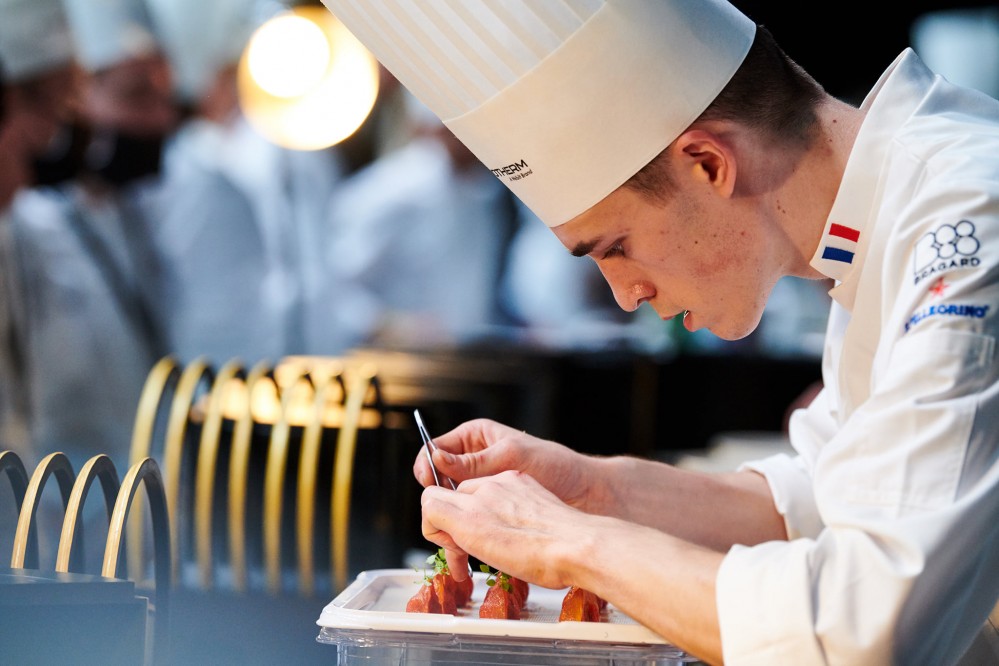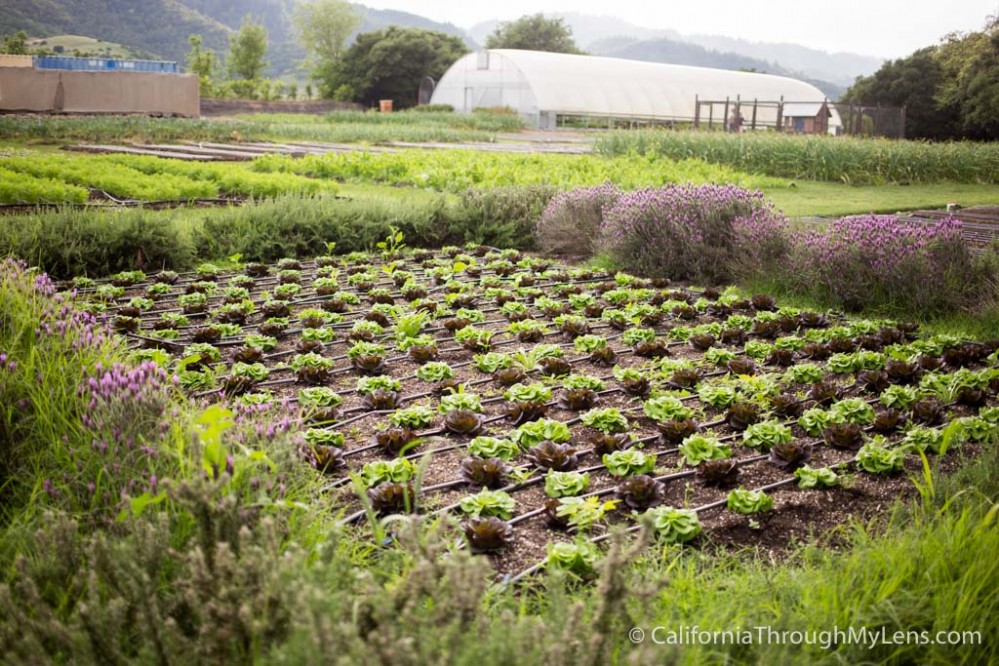Talent management at The French Laundry restaurant
A reading note on Thomas Keller’s “The French Laundry, Pe Se”

How do industries outside of tech do business?
How do supermarkets do marketing? How do film studios do product development? How do restaurants raise funding? I’ve primarily worked in software companies for much of my career, but I’m always curious by the different ways that different industries solve similar types of business problems.
Thomas Keller’s most recent book, The French Laundry, Per Se is not only a book of recipes, but also a fascinating peek into how the fine dining industry approaches talent development.
Keller holds the distinction of being the only American chef to have been awarded simultaneous three-star Michelin ratings for two different restaurants, The French Laundry in California and Per Se in New York. Both restaurants have appeared on several best-of lists, and their alumni include many notable figures within fine dining.
All of which to say, it’s no surprise that Keller’s group of companies has a reputation for both attracting and grooming talent at the very upper tier of global fine dining.
Here are a few themes I noticed regarding how Keller and his team actively nurture talent.
They help junior team members level up by requiring they master the hard things first
The French Laundry introduces the most junior team members into the kitchen by putting them on the hardest tasks first. It sounds a bit like a trial by fire, but it also sounds like they offer them the most hands-on mentorship to ensure they’re able to level up quickly.
The canapé station remains the hardest station for a chef de partie to work. It’s usually manned by the youngest and least experienced chef in the kitchen after the commis. It’s rapid-fire: three, four, even five courses you’re responsible for as soon as the guest is seated. If you’re successful on canapé, you may be in charge of turning out as many as twelve. They have to be ready the moment the restaurant opens. The chef de partie’s work will set the tone for the rest of a guest’s meal. We put the young chefs on the canapé station because if they can be successful there, they can be successful at any station in the restaurant. And yes, they work right next to me or the chef de cuisine and so are scrutinized, but they also have our support—we can help them as they find their legs.
It’s further interesting to me that it appears Keller uses his casual concept restaurants as a sort of farm system that grooms talent for his more high profile restaurants.
Everyone who works here enters with different life experiences and different skills that they apply to a range of tasks. We hire them, we train them, we mentor them, whether they are young chefs at Bouchon or Ad Hoc or more mature chefs arriving at per se or The French Laundry.
They give talent the opportunity to show off what they can do in front of the entire company
It appears that there is a ritual at The French Dinner and Per Se known as Family Dinner. I can’t find information about it online, but from the few references in the book, it appears to be a late lunch meal that is prepared by someone on the team and served to the rest of the staff at 3:45 pm. Family Dinner gives junior team members a chance to demonstrate mastery and creativity in front of the rest of the company.
In the fall of 1999, I was on the book tour for The French Laundry Cookbook. One of the stops was the Williams Sonoma in Pasadena. In line with his mom, waiting to get a book signed, was twenty-year-old Corey Chow, a psychology major at Cal Poly Tech in Pomona, California. He didn’t know he wanted to be a chef yet—his mom just knew he loved food.
Eight years later, during family meal at Per Se, I got my plate and took it to the kitchen to eat. It was Chinese food—beef and broccoli, fried rice, fish with scallions, steamed and finished by flash frying. I asked Jonathan Benno, chef de cuisine, “Who made family meal?” and he pointed to a commis, the lowest rung of the brigade. It was Corey Chow, who now had my attention.
What is the equivalent of Family Meal in tech? Maybe it’s “hack days”? Like CB Insights’ Hack Days (here are examples of things team members built) and the New York Times’ Maker Day.
I think the elements that make Family Dinner effective include the following:
- Everyone can participate. From what I could tell, everyone has a turn at Family Dinner, which is great for junior team members who might otherwise not have a turn.
- An expectation of a high quality of final outcome. Family Dinner isn’t merely a test kitchen exercise. It’s an actual meal that should ideally be worthy of the high standards of the restaurant, so team members put real effort behind it.
- Senior leadership is guaranteed to see the outcome. This might be the most important one. Everyone sees what you did, including very senior leadership, so this is an amazing opportunity make a good impression.
The role of competitions in upskilling talent in the fine dining industry

The French Laundry, Per Se features essays written by several members of the team beyond Thomas Keller. I was surprised to read this by Corey Chow.
I’d kept in touch with Eli and I knew that the executive sous, Matt Peters, was about to start training for the Bocuse d’Or competition, which would take him away from Per Se.
What kind of competition could possibly compel someone to leave their full time job?
The Bocuse d’Or is arguably the world’s most prestigious cooking competition. Over the course of two years, there are 60 pre-qualifying national competitions that determine who will compete in the continental qualifying events, which further determine the 24 countries that will compete in the final. The final is a high pressure 48 hour event where the chefs are judged on criteria such as presentation, taste, cooking method, respect of the products, and originality of dishes.
I’ll admit that I was mildly skeptical when I saw references to the Bocuse d’Or as the Olympics of cooking but there’s no way to watch videos of the ecstatic winners and the flag-waving audience and not come away acknowledging that the competition is really meaningful for this community. This video of the 2021 finals gave me chills.
The Bocuse d’Or does several things. It’s a vehicle for discovering talent from all over the world. It’s a forum where new ingredients and techniques can be shared amongst peers. And it creates prestige around cooking, which might compel an ambitious young person to pursue cooking as a career over other options. (For a great treatment of the importance of awards like this, see Samo Burja’s essay titled Honors Fuel Achievement)
I suspect that the existence of this competition has done much to give talent something to aspire to, and to further invest in improving their craft. It creates a benchmark and a standard to which talent can aspire.
Do we have anything like this in tech? I guess fundraising, product announcements, M&A news create similar buzz….
Should we have something like this in tech? What might it look like to have a prestigious award for accomplishments in Saas product? Are awards counter to the spirit of technology?
They run a scholarship program that allows team members go deep on a particular topic
Thomas Keller’s restaurant group runs a scholarship program that allows staff take paid time off to extend their understanding of some aspect of the craft.
Allow me to quote Keller at length as he describes this remarkable initiative. (The “stock” he’s to which he’s referring is a special food stock - the cooking liquid that is the primary ingredient in soups, stews and sauces - introduced to the restaurant by Corey Chow.)
We can’t write about this stock without mentioning the scholarship program created by TKRG (the name of our restaurant group) that sends our employees around the world to study what they’re interested in. They can write a proposal to work with a restaurant or farmer or forager abroad and, if it’s approved, have their trip paid for by the scholarship. Elaine Smyth, one of the team members on this book, earned a scholarship to work with cacao farmers in Peru and Chef Olivier Roellinger in Brittany. Sarah Hsieh, who crafts the foie gras dishes included in this book (see this page), went to London on a scholarship to work with Calum Franklin at the Holborn Dining Room, a master of the pâté en croûte.
Perhaps one of the most impactful uses of our scholarship, an extreme example of its power to transform a young chef, was sending Grant Achatz to work with Ferran Adrià, the godfather of modernist cuisine, at El Bulli, his groundbreaking restaurant in Roses, Spain. Grant would never have been able to afford that trip on his own, and it was a defining experience for him. So much so that when he returned, he no longer fit into The French Laundry—it was time for him to leave. He moved to Chicago, where he ultimately opened the Michelin three-star modernist restaurant Alinea.
In Corey’s case, he won a scholarship to Copenhagen, where Matt Orlando, chef and owner of Amass, opened up for him the world of whole-ingredient utilization (see his carrot oil, made from the peelings of carrots, on this page, and his pea granité on this page). The week before Corey began at the restaurant, Amass had hosted a pop-up ramen restaurant, where Orlando had watched this stock being made. Corey took that idea and refined it for per se by emulsifying even more fat into the stock. He calls it “Super Stock.” This chicken stock is so flavorful we usually prefer it to a fumet.
With the resulting stock, Corey can achieve all kinds of effects. He can add it to a béarnaise reduction in place of butter, finishing the béarnaise “jus” with fresh tarragon. He can put it in an iSi siphon and make a thick, foamy sauce. He might use it to bind pasta and finish it with black truffle. He can use it as is, like a broth, perhaps seasoned with fresh herbs or with pastrami spices. He can pour it over roasted lobster bones for an intense, meaty lobster stock. It would even work with halibut bones. There’s almost nothing you can’t do with this stock.
This is remarkable.
This is completely blowing my mind. I’m outrightly envious that this exists within the Keller group of companies.
For most of us, college is the last time when we’re able to run a self-directed course of study and think deeply about some aspect of the world we find interesting (I still have fond memories of my senior essay experience). The moment you step on the career treadmill, it becomes hard to make the time for such self-directed learning. What a gift it must be to be able to marry both work and learning in this way!
I so badly wish there was more information online about this scholarship (the closest I could find was a couple references to it on this page). What is the eligibility criteria? How do they choose the recipient? How many recipients are there in a cycle? I would also love to see a list of the winning proposals.
They bring team members close to the ingredients

Keller ensures that his team is able to get as close to and learn as much as possible about their ingredients with which they work.
One way he does this is by inviting the people who grow and produce the food to come speak to the team about how they do it. In this snippet, Soyoung Scanlan, founder of Andante Dairy, recounts her experience being invited to speak with the French Laundry team.
“I’d never been in a professional kitchen before,” Soyoung says. “I arrived in the afternoon and the kitchen was in the middle of chaotic prep. I’d heard stories about Chef Keller and I was very nervous. I heard he was scary. But when I arrived, he and Eric shut down prep, covered a steel table with a white tablecloth, and said, ‘Everyone, stop, we’re going to have a cheese tasting.’ He asked all the chefs to put on clean aprons to taste the cheese. It was like a dream. I couldn’t believe the respect they were showing me, and my cheese. I’d brought them Nocturne, cow’s milk with ash. I name all my cheeses after musical terms, even my company, Andante Dairy. I also brought Mélange, a goat-cow mix with a white rind, and Rondo, also goat and cow but with herbs.
I imagine that this first-hand education about ingredients must make the average French Laundry staff very knowledgeable.
Another thing that helped with this education was the three acre culinary garden right opposite The French Laundry.
We grow a thousand varieties of plants; 250 of them supply food to the restaurants, including over 1,400 pounds of tomatoes alone each season. Our garden chefs grow plants to be eaten, to be drunk, to be admired for their beauty and fragrance alone. They grow passion fruit vines in the parking lot; jasmine, violas, pansies, and lilies for infusions; and fresh herbs for distillations. And I’ve revived the honeysuckle in front of the restaurant that was so prominent when Don and Sally Schmitt owned The French Laundry.
We also have a small garden behind Ad Hoc, a half mile from The French Laundry, an acre at the nearby Trefethen vineyards, and a one-acre stone fruit orchard in Napa. And four beehives—three for honey (about thirty pounds per hive per year) and one just for the bees, kept in the hollow stump of a sycamore tree that had been in front of my dad’s house next to the restaurant.
Because we don’t need to grow for a farmers’ market, we can cultivate our garden purely for flavor, for intermittent picking, and, of course, for what’s on the menu. Not only is the harvest very, very fresh (in our case, the “farm-to-table” journey means walking across the street), but it’s also specific to our chef’s desires.
Once again, I suspect that this intimate relationship with the ingredients must deepen the staff’s understanding of how to put them together in delicious ways.
I was very saddened to hear that the French Laundry garden appeared to have been sold in October 2020. I don’t know what that means for the garden, but since it appears the area will be developed into a hospitality concept, I hope they’re able to maintain much of the original. If you’d like to learn more about the space, this first-hand account of visiting the culinary garden is really lovely.
(If you enjoy my writing and want to support my personal research projects, the best way is to buy me a book!)
-
Great Teams
-
Great Teams
-
Great Teams